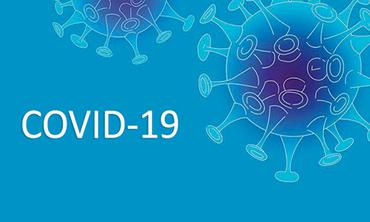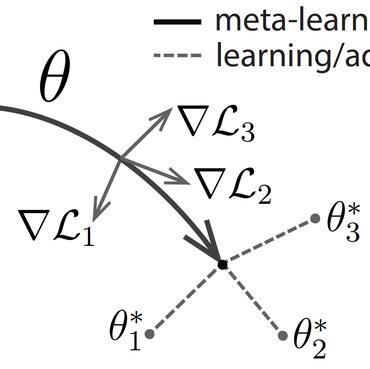Search Results for author: Quande Liu
Found 14 papers, 11 papers with code
ID-Animator: Zero-Shot Identity-Preserving Human Video Generation
1 code implementation • 23 Apr 2024 • Xuanhua He, Quande Liu, Shengju Qian, Xin Wang, Tao Hu, Ke Cao, Keyu Yan, Man Zhou, Jie Zhang
Based on this pipeline, a random face reference training method is further devised to precisely capture the ID-relevant embeddings from reference images, thus improving the fidelity and generalization capacity of our model for ID-specific video generation.
Open-world Semantic Segmentation via Contrasting and Clustering Vision-Language Embedding
no code implementations • 18 Jul 2022 • Quande Liu, Youpeng Wen, Jianhua Han, Chunjing Xu, Hang Xu, Xiaodan Liang
To bridge the gap between supervised semantic segmentation and real-world applications that acquires one model to recognize arbitrary new concepts, recent zero-shot segmentation attracts a lot of attention by exploring the relationships between unseen and seen object categories, yet requiring large amounts of densely-annotated data with diverse base classes.
Single-domain Generalization in Medical Image Segmentation via Test-time Adaptation from Shape Dictionary
no code implementations • 29 Jun 2022 • Quande Liu, Cheng Chen, Qi Dou, Pheng-Ann Heng
Domain generalization typically requires data from multiple source domains for model learning.
Dynamic Bank Learning for Semi-supervised Federated Image Diagnosis with Class Imbalance
1 code implementation • 27 Jun 2022 • Meirui Jiang, Hongzheng Yang, Xiaoxiao Li, Quande Liu, Pheng-Ann Heng, Qi Dou
Despite recent progress on semi-supervised federated learning (FL) for medical image diagnosis, the problem of imbalanced class distributions among unlabeled clients is still unsolved for real-world use.
DLTTA: Dynamic Learning Rate for Test-time Adaptation on Cross-domain Medical Images
1 code implementation • 27 May 2022 • Hongzheng Yang, Cheng Chen, Meirui Jiang, Quande Liu, Jianfeng Cao, Pheng Ann Heng, Qi Dou
Based on this estimated discrepancy, a dynamic learning rate adjustment strategy is then developed to achieve a suitable degree of adaptation for each test sample.
 Histopathological Image Classification
Histopathological Image Classification
 Image Classification
+2
Image Classification
+2
Source-Free Domain Adaptive Fundus Image Segmentation with Denoised Pseudo-Labeling
1 code implementation • 19 Sep 2021 • Cheng Chen, Quande Liu, Yueming Jin, Qi Dou, Pheng-Ann Heng
We present a novel denoised pseudo-labeling method for this problem, which effectively makes use of the source model and unlabeled target data to promote model self-adaptation from pseudo labels.
Federated Semi-supervised Medical Image Classification via Inter-client Relation Matching
1 code implementation • 16 Jun 2021 • Quande Liu, Hongzheng Yang, Qi Dou, Pheng-Ann Heng
This paper studies a practical yet challenging FL problem, named \textit{Federated Semi-supervised Learning} (FSSL), which aims to learn a federated model by jointly utilizing the data from both labeled and unlabeled clients (i. e., hospitals).
FedDG: Federated Domain Generalization on Medical Image Segmentation via Episodic Learning in Continuous Frequency Space
1 code implementation • CVPR 2021 • Quande Liu, Cheng Chen, Jing Qin, Qi Dou, Pheng-Ann Heng
Federated learning allows distributed medical institutions to collaboratively learn a shared prediction model with privacy protection.
Contrastive Cross-site Learning with Redesigned Net for COVID-19 CT Classification
1 code implementation • 15 Sep 2020 • Zhao Wang, Quande Liu, Qi Dou
The pandemic of coronavirus disease 2019 (COVID-19) has lead to a global public health crisis spreading hundreds of countries.
Shape-aware Meta-learning for Generalizing Prostate MRI Segmentation to Unseen Domains
1 code implementation • 4 Jul 2020 • Quande Liu, Qi Dou, Pheng-Ann Heng
We present a novel shape-aware meta-learning scheme to improve the model generalization in prostate MRI segmentation.
Deep Mining External Imperfect Data for Chest X-ray Disease Screening
no code implementations • 6 Jun 2020 • Luyang Luo, Lequan Yu, Hao Chen, Quande Liu, Xi Wang, Jiaqi Xu, Pheng-Ann Heng
Recent researches have demonstrated that performance bottleneck exists in joint training on different CXR datasets, and few made efforts to address the obstacle.
Semi-supervised Medical Image Classification with Relation-driven Self-ensembling Model
1 code implementation • 15 May 2020 • Quande Liu, Lequan Yu, Luyang Luo, Qi Dou, Pheng Ann Heng
It is a consistency-based method which exploits the unlabeled data by encouraging the prediction consistency of given input under perturbations, and leverages a self-ensembling model to produce high-quality consistency targets for the unlabeled data.
MS-Net: Multi-Site Network for Improving Prostate Segmentation with Heterogeneous MRI Data
2 code implementations • 9 Feb 2020 • Quande Liu, Qi Dou, Lequan Yu, Pheng Ann Heng
However, the prostate MRIs from different sites present heterogeneity due to the differences in scanners and imaging protocols, raising challenges for effective ways of aggregating multi-site data for network training.
Unpaired Multi-modal Segmentation via Knowledge Distillation
1 code implementation • 6 Jan 2020 • Qi Dou, Quande Liu, Pheng Ann Heng, Ben Glocker
We propose a novel learning scheme for unpaired cross-modality image segmentation, with a highly compact architecture achieving superior segmentation accuracy.








